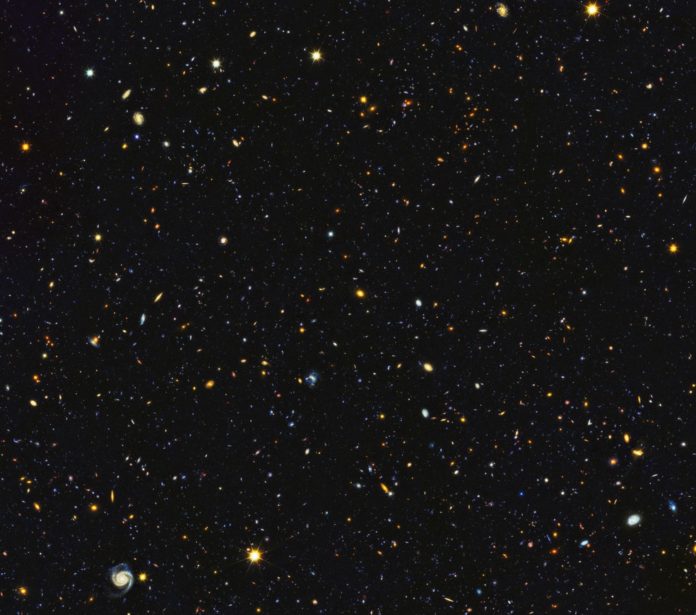Ultraviolet light has been the missing piece to the cosmic puzzle. Presently, combined with infrared and noticeable light information from Hubble and other space and ground-based telescopes, cosmologists have collected a standout amongst the most complete pictures yet of the universe’s evolutionary history.
Astronomers using the ultraviolet vision of NASA’s Hubble Space Telescope have captured one of the largest panoramic views of the fire and fury of star birth in the distant universe. The field includes roughly 15,000 galaxies, around 12,000 of which are forming stars.
Hubble’s ultraviolet vision opens another window on the evolving universe, following the introduction of stars throughout the last 11 billion years back to the universe’s busiest star-forming period, which occurred around 3 billion years after the big bang.
The picture straddles the gap between the very distant galaxies, which must be seen in infrared light, and closer galaxies, which can be seen over a wide range. The light from inaccessible star-forming areas in remote galaxies began as ultraviolet.
Be that as it may, the extension of the universe has moved the light into infrared wavelengths. By looking at pictures of star development in the far off and nearby universe, space experts gather a superior comprehension of how nearby cosmic systems developed from little clusters of hot, young stars long prior.
Hubble can provide some of the most sensitive space-based ultraviolet observations, because of Earth’s atmosphere. Earth’s atmosphere filters most of the ultraviolet light.
The program, called the Hubble Deep UV (HDUV) Legacy Survey, extends and builds on the previous Hubble multi-wavelength data in the CANDELS-Deep (Cosmic Assembly Near-infrared Deep Extragalactic Legacy Survey) fields within the central part of the GOODS (Great Observatories Origins Deep Survey) fields. This mosaic is 14 times the area of the Hubble Ultra Violet Ultra Deep Field released in 2014.
This image is a portion of the GOODS-North field, which is located in the northern constellation Ursa Major.
